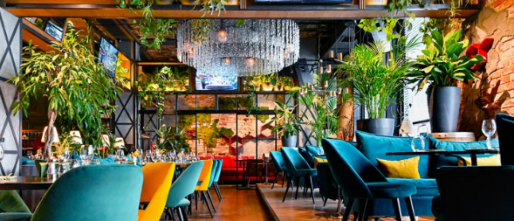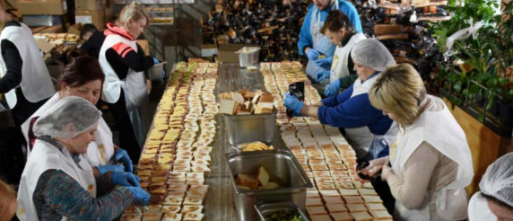Subscriptions, rewards and memberships give foodservice providers the opportunity to revive crucial customer loyalty during disrupted times. Juliet Martin outlines the picture
Changing philosophies about ownership, a pandemic-driven rise in e-commerce and uncertain financial times have led to an explosion of the subscription economy. Across industries, subscription models are offering customers a lower-cost, on-demand alternative to buying.
Today’s consumer doesn’t need, or expect, to own CDs, DVDs or even their own car when they can access music, film and transport when and where they need it on platforms like Netflix, Spotify and Cazoo.
Now, creative restaurant operators are exploring the possibility of bringing the same ideas to the foodservice industry. Subscription models and novel reward programs are opening new opportunities for operators to attract and retain customers at a time when normal operation has been radically disrupted and brand loyalty is wavering.
In a GlobalData survey, 75% of people said they still feel concerned about visiting stores, and 67% purchase on-the-go food and drink less often than they did before the Covid-19 pandemic.
In the last two years, lockdowns have driven people out of city centers and workplaces and done away with the commute and the office lunchbreak. Even though many organizations are beginning to return to the office, working from home is here to stay, and coffee shops and other foodservice providers are dealing with dramatically reduced footfall. At the same time, 39% of customers, mainly Gen Z and Millennials, are deserting trusted brands for new ones, according to McKinsey. Foodservice locations must get creative to revive their customer base.
The pandemic has already heralded ‘the return of the milkman’ – a resurgence of demand for subscription milk delivery services. Subscription, membership and reward schemes, run from mobile apps, are giving foodservice operators the chance to communicate directly with customers, design novel experiences and generate new brand loyalty. For customers, they offer greater control, reliability and convenience during uncertain times.
“It’s no surprise to see [the subscription model] migrating into foodservice,” says GlobalData consulting director Mark Dempsey. “Today’s customer is all about this kind of solution: it’s online, it’s ultra-convenient, it’s set up to fit with their lifestyle completely.”
Signing up
Modern commercial loyalty schemes date back to the 20th century, with Green Shield reward stamps for shoppers reaching the UK in 1958 and American Airlines’ Frequent Flier program being launched in 1981. Designed to encourage returning customers by allowing them to work towards a goal and giving them the feeling of being recognized for their patronage, loyalty schemes nurture loyal customers and give companies a unique competitive edge.
Today’s companies are using technology, including advanced analytics, to take this idea further and provide customers with new, exciting commitment options.
Just last month, McDonald’s announced its new MyMcDonald’s Rewards scheme in the UK. The scheme enables customers to collect points for each purchase on the app and redeem them against menu items or exchange them for a charity donation. The scheme is currently being piloted in 10 restaurants in the North of England, with the aim to roll out nationally later this year.
Costa’s Costa Club reflects the traditional loyalty card model, allowing its customers to ‘buy eight drinks, get one free’, alongside a range of personalised benefits including ‘free cake on your birthday’ and extra points for using a reusable cup. Similarly, UK-based French restaurant chain Bistrot Pierre is offering a point-based scheme which includes seasonal wine offers, monthly prize draws and exclusive events.
Subscription foodservice offerings are now offering customers an alternative to the traditional rewards or points-based scheme. Pret a Manger is running a fixed-fee monthly coffee subscription. According to the company’s website, coffee fans can enjoy up to five barista-made drinks a day for £25 a month. Launched in September 2021, the program has been described as the UK’s first ever in-shop coffee subscription. Leon has also offered a similar coffee subscription services.
Customers are primed for these kinds of offerings. A recent Celtra survey found that 52% of consumers had downloaded a new restaurant app in the last six months, and 32% said that loyalty programs would increase their spending.
Loyalty is key
Stamp or points-based schemes such as McDonald’s and Costa’s reward loyalty directly with free items and offers. Subscriptions represent a monthly sunk cost, motivating customers to come into the shop to get their money’s worth. First and foremost, these schemes are designed to attract customers and keep them coming back.
“Loyalty is absolutely critical,” says Dempsey. “All foodservice models, from the smallest independent to the largest global chain, are built on knowing that you can sustain the model and bring in new customers.”
For coffee shops, this is particularly crucial. According to GlobalData research, the coffee and tea shop sector shrank 18% to £5.4 bn by the end of 2021. Customers who have become used to working from home need new motivation to frequent the coffee shop. Not only this, but the likes of Starbucks, Costa, Pret and Caffé Nero face a saturated market, particularly in city centers. While it may be difficult to differentiate themselves in terms of their offering, something new like a subscription model or innovative rewards scheme presents a novel draw for customers.
“Human nature dictates that if you pay for something, you want to use it,” says Chris Stern FCSI, managing director of Stern Consultancy. “You then will probably bring your friends along with you. Coffee is a perfect item for this as it’s something that takes repeat purchasing really well.”
The apps that these schemes operate on also open new avenues for data collection for foodservice companies. Today, data is more commercially important than ever, but data protection and cookie laws are becoming ever more stringent. By having customers sign into apps and tracking their preferences, companies can access a wealth of first-party data. Customers can then be offered more personalised suggestions and rewards, and companies can access valuable insight into their client base.
Tracking these trends can also be used for financial planning, budgeting and resource management, as well as menu management to cut down waste. Subscription models also provide a guaranteed revenue stream, by requiring a longer commitment from the customer. This is invaluable for companies at a time when lockdowns could be imposed overnight and footfall is highly variable.
Bold expectations
At the same time, foodservice is very different from music, film or transport, and restaurants seeking to revolutionize their models face unique challenges.
“This is a much more conservative sector,” explains Stern. “It’s surprising how technology-averse the market tends to be.”
However, the pandemic has seen a turning of the tide. The rise of pre-ordering and home delivery led to a huge upswing in the adoption of technology, and today’s consumer may be more open to experiment. According to McKinsey, 75% of consumers tried new shopping behaviors during the pandemic.
Dempsey explains that it is important for foodservice providers to reconcile the new possibilities of subscription services with existing market trends. “One of the biggest challenges is going to be matching against consumers’ bold expectations,” he says. “One of the biggest trends we’ve been seeing for five or six years is choice. The big progress in foodservice in the last 10 years is the ability to customize.”
The subscription model should be carefully designed to avoid taking away any of that choice, Dempsey adds: “My advice to operators would be to be very careful about what you limit.”
As well as this, companies should be sensitive to their customers’ financial restraints in the post-pandemic economy. For many customers facing job uncertainty or financial concerns, flexibility is key, so lower-commitment subscription or membership options may suit them better.
Subscription prediction
As more foodservice companies experiment with subscription models, it is likely the momentum will grow. “Now it’s high-profile, I’m sure we will see more of it,” says Stern.
Other foodservice providers can take lessons from the meal kit industry, where the likes of Gousto, Pasta Evangelists and Berlin-based Hello Fresh subscription services have seen huge success across Europe and in recent years.
“Now, they are providing wider and wider choice and more and more flexibility,” Dempsey points out. “Some are expanding into entirely vegan solutions, 24-hour delivery or real subculture cuisines.”
This is a valuable lesson for foodservice operators. As more subscription, reward and membership options enter the market, the challenge will be to differentiate yourself – and diversity will be key to attract today’s consumer – who is inquisitive, experimental and more educated than ever.
“As foodservice operators come to terms with the risks [of subscription models] and how to mitigate them, and the level of flexibility that demands – how to make customers loyal, how to keep them connected – I have no doubt that this will become a significant part of foodservice in the future,” concludes Dempsey.







